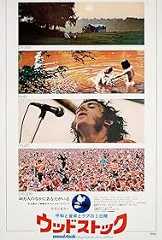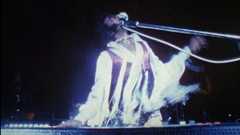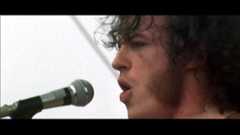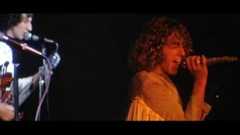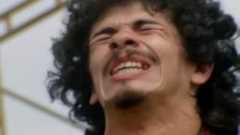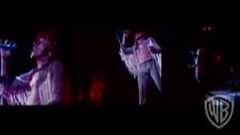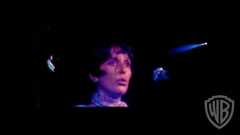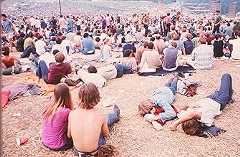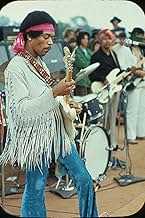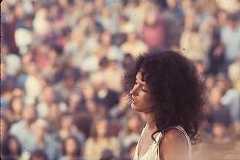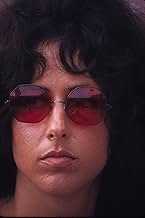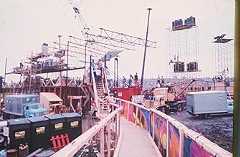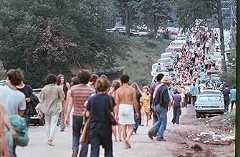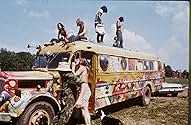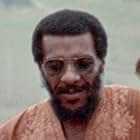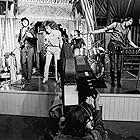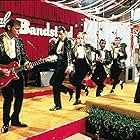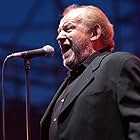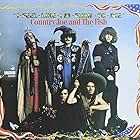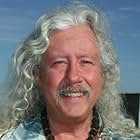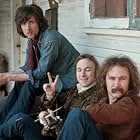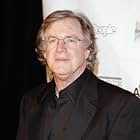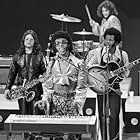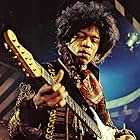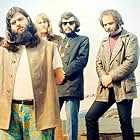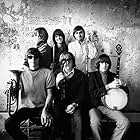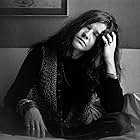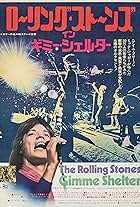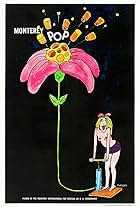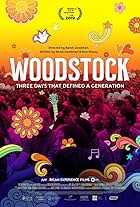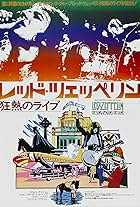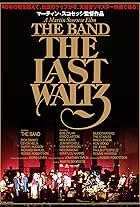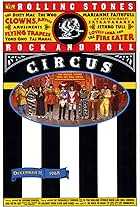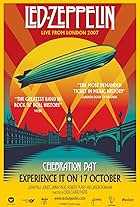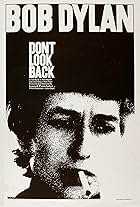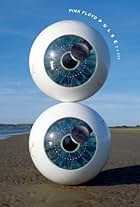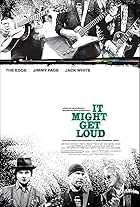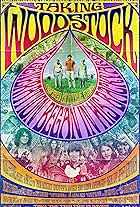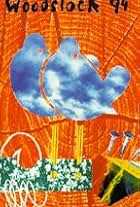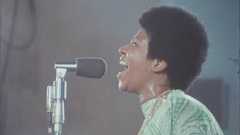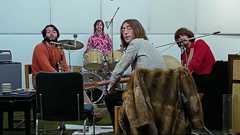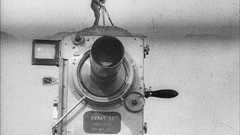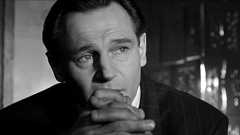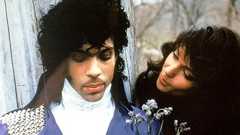Oscar-winning musical chronicle that brilliantly captures the three-day rock concert and celebration of peace and love that became a capstone for the Sixties.Oscar-winning musical chronicle that brilliantly captures the three-day rock concert and celebration of peace and love that became a capstone for the Sixties.Oscar-winning musical chronicle that brilliantly captures the three-day rock concert and celebration of peace and love that became a capstone for the Sixties.
- Won 1 Oscar
- 2 wins & 2 nominations total
- Themselves
- (as Sha Na Na)
- Themselves
- (as Crosby Stills and Nash)
- Themselves
- (as Sly & the Family Stone)
Featured reviews
"We must be in Heaven, man!"
Enjoyed additional footage immensely
Superb documentary
The musical acts are varied--you'll love some and hate others. For me the definite highlights were Joan Baez; the Who; Sha-Na-Na; Joe Cocker; Crosby Stills & Nash; John Sebastian; Country Joe McDonald; Sly and the Family Stone and Jimi Hendrix. Also the sound is great and there is superb editing during the sequences with excellent use of multiple screens.
I saw the directors cut with adds 40 minutes of music (bringing the running time up to 3 hours and 40 minutes). They add Canned Heat, Jefferson Airplane, Janis Joplin and another number by Hendrix. Except for the Joplin footage none of it is really good or needed. The original 3 hour cut is fine.
Warning--there's lots of swearing, nudity, sex and drug taking. It didn't bother me, but it might bother others.
A great one of a kind movie. Don't miss it!
Serves As Both A Documentary & Concert DVD
There is a lot to enjoy, including the stuff between the music if you have never seen this before. It certainly captures the wildness of the late 1960s, the good and the bad. It really brings you back to a unique time in American history. For someone who was part of that time, things that were "cool" back then now look and sound a little stupid and naive, but it's still fun to watch. Not only do you get a ton of music, but you see a half million people weathering storms, the mess, drugs, port-o-johns, drugs, dancing, skinny-dipping, drugs, eating. You get the idea.
Music-wise, everyone has their favorites so I'll put a plug or two in for the artists I've always enjoying watching-seeing the most in this movie: Ten Years After; Sly And The Family Stone; Canned Heat, The Who, Richie Havens, Santana, Sha Na Na, Country Joe And The Fish, The Jefferson Airplane and Crosby, Stills and Nash.
At almost four hours, you can choose from a variety of music acts, enough to give you at least an enjoyable couple of hours of that alone, if you wish. This is a must- have for music fans of that era.
The good, the bad and the ugly of hippie culture -- and all entertaining
The concert took place over 3.5 days in mid-August, 1969, at the height of the Vietnam fiasco and the counterculture movement. Twice as many people attended than expected and it was the biggest gathering of people in one place in history, about 400,000, only beat by the infamous Isle of Wight concert in England a year later.
The film shows the good and bad of the hippie culture. Generally speaking, the movement was a reaction against the Vietnam war and the sterile legalism that America and similar countries had devolved into by the early-mid 60s. The youth wanted freedom, peace and love and you can see this in the movie. It was a good thing. Yet you can also see the bad -- like the bad acid situation ("Hey, it's your trip, man..."). Both Janis Joplin and Jimi Hendrix appear at Woodstock, and they're great, but they'll be dead in a little over a year, both only 27 years-old. Jim Morrison and the Doors didn't play because they declined at the last moment and later regretted it. Jim died shortly after the other two, also only 27. Interestingly, Jethro Tull declined because Ian Anderson didn't like hippies and was concerned about things like inappropriate nudity (?!).
But I don't mean to put a downer on Woodstock because it was an amazing event, never to be repeated. They tried to repeat it at Altamont Speedway in California, less than four months after Woodstock, and also at Isle of Wight, but both festivals turned out badly and put the the kibosh on the movement's noble ideals, even though it was pretty much inevitable since freedom without wise parameters naturally devolves into chaos and self-destruction.
Regardless, as a snapshot in time, "Woodstock" is fascinating and supremely entertaining. Half of the appeal is the incredible magnitude of the event itself and the footage of the people -- the hippies who came and the adults who lived there and tried to help or, in a couple cases, complained. This includes the fun and sometimes outrageous escapades of the festival. A good example would be the skinny dipping or, in many cases, semi-skinny dipping. Although this may have been a cool experiment at the event it never caught-on in the culture at large. Why? Probably because few people want to see someone else's Captain Winky and, unless a female has the body of a starlet, who wants to see it? (lol).
But what can explain the mass appeal of Woodstock? What made the hippies come out en masse? Was it just the music? The filmmakers ask this very question of a guy at the festival who looks about 16-17 years old. He says it wasn't just the music, at least not for him. The hippies crawled out of the woodwork, so to speak, like zombies seeking some kind of solace, a sense of community, a reason to... live. And Woodstock met that need.
The other half of the appeal is, of course, the performances and music. What's amazing is how diversified the styles of music were and how non-heavy. Don't get me wrong, many of the performances are seriously energetic, but they're light compared to what rock/metal evolved into in the 70s to the present. There was acoustic folk, Caribbean, blues, rock, gospel, pop, 50s, Latin rock, jazz fusion and psychedelic rock. Some of it I like and some of it I don't much care for, but they're all entertaining in one way or another. Since I'm into metal, my favorites are Santana, The Who and Jimi Hendrix, but I also enjoy a lot of the lighter stuff, like Joan Baez ("Swing Low Sweet Chariot") and Arlo Guthrie ("Coming into Los Angeles"). And then there are the acts that come out of left field, like Sly and the Family Stone and Sha Na Na, even Ritchie Havens.
What's amazing is how brief the classic hippie era was. It started around '65 and its apex was Woodstock in August '69, a mere four years later. From there it was all downhill with Altamont, Isle of Wight and the deaths of the movement's principal musical icons. As such, it only lasted some eight years.
Thankfully, we have this film to see the good aspects of the period -- some bad, some eye-rolling -- but mostly good, and definitely entertaining.
The film was shot in White Lake, New York, and runs 184 minutes while the 1994 Director's Cut runs 225 minutes. I've only seen the latter.
GRADE: A
Did you know
- TriviaThe two- and three-panel screen presentations seen through much of the movie were innovations born of necessity on the part of its creators and film editorMartin Scorsese. With so much footage shot and the studio's unwillingness to expand the length of the released movie's running time, it was decided that a way must be found to maximize the amount of footage that could be used. Because of the wide-screen aspect of the release, it was realized that the multi-panel format could be used most effectively to not only include as much film footage as possible, but to also have concert footage and crowd reaction shots together on the same screen. The filmmakers believed it was important to show the viewing public just what a monumental event the Woodstock festival had unintentionally become. This method also allowed them to show many behind-the-scene activities that reflected all the hard work put in by the production staff and crew, another important detail that the concert's producers thought was very important for the public to see as they always had contended that without the efforts of the entire production staff, this event easily could have degenerated into a disaster.
- Quotes
Interviewer: What do you think about the kids?
Police Officer: From what I've heard from the outside sources for many years I was very, very much surprised and I'm very happy to say we think the people of this country should be proud of these kids, not withstanding the way they dress or the way they wear their hair, that's their own personal business; but their, their inner workings, their inner selves, their, their self-demeanour cannot be questioned; they can't be questioned as good American citizens.
Interviewer: That's kind of surprising coming from a cop.
Police Officer:[smiling]I'm not a cop, I'm the Chief of Police.
- Crazy creditsAfter the closing credits of the Director's Cut,Crosby Stills & Nash are heard singing "Cost of Freedom". The visuals are of a still shot of the crowd at Woodstock, fading into a long list of names of various people, including performers who were at Woodstock, who since have passed away. The list of names ends with the following: Peace Music Ecology, Liberty Community Democracy, Alternatives Knowledge Altruism.
This is then followed by: Woodstock Generation 19**-20**. R.I.P. it up, tear it up, have a Ball.
- Alternate versionsNBC edited 88 minutes from this film for its 1981 network television premiere.
- ConnectionsEdited intoThe Who: The Kids Are Alright (1979)
- How long is Woodstock?Powered by Alexa
Details
Box office
- Budget
- $600,000 (estimated)
- Gross US & Canada
- $126,562
- Gross worldwide
- $321,295
- Runtime
- 3h 4m(184 min)
- Color
- Sound mix
- 4-Track Stereo(original release)

